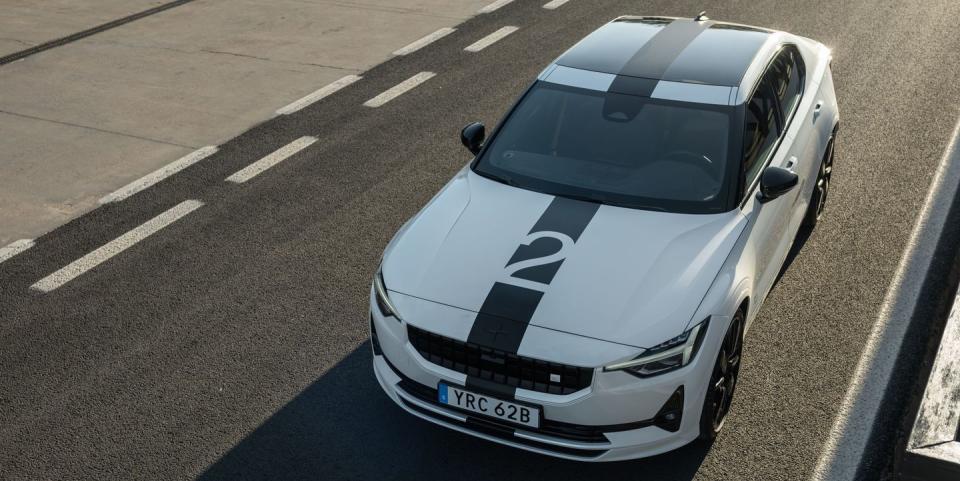How a Custom Suspension Transforms the Polestar 2 BST into a Beast

The skunkworks project that became the Polestar 2 BST started life with the automaker’s chassis engineers lowering a dual-motor Polestar 2.
Polestar started life, after all, as a racing team, and even before being shaped into the EV-dedicated arm of parents Volvo and Geely, would put its moniker on the backs of performance-tuned Volvos.
The custom Öhlin dampers that underpin the BST—for “Beast”—are easily accessed under the hood and can be adjusted by the driver.
Old-school performance-car enthusiasts often fret about the coming all-electric future. They worry that automotive mechanicals will be entirely replaced by software, sensors, and all things digital—turning sports cars into lifeless digital devices. But the long-term future of analog racing components appears safe, based on our half-day drive of the limited-edition Polestar 2 BST last week.
Polestar might be a high-tech, all-electric brand now. But it was established in Sweden in 1996 as a racing team. “Our history comes from motorsports,” said Christian Samson, Polestar’s global head of product attributes. “That legacy and the knowledge of these racing technologies remain in the company.” Samson traveled from the company’s headquarters in Gothenburg, Sweden, to Northern California to answer questions from journalists during the media drive for the Polestar 2 BST. Our 100-mile spin took us from San Francisco to the hairpin turns of Pescadero Creek Road in San Mateo County, up Highway 1 along the coast, and through the winding mountain stretches west of Stanford University.

“Our chassis engineers play around a lot to explore attributes,” said Samson. They experimented with the dual-motor Polestar 2—the variant equipped with the 476-horsepower Performance Pack—by lowering it one inch. When they handed the keys to Thomas Ingenlath, Polestar’s chief executive, he took the altered electric sports sedan for a ride and was enthralled. “He asked us to find a way to sell it,” Samson explained.
Samson also loved how the Polestar skunkworks project imbued the car with track qualities. But as the company’s chief of product attributes, he knew the car had to be comfortable for everyday driving. “Normally, lowering the car for extreme performance would make it almost unbearable on public roads. It would be super shaky,” he said.
Tweaking software wasn’t the answer. Instead, the company turned to analog technology from Öhlins Racing to help regain everyday comfort in the low-to-the-ground 476-hp sedan. The legendary Swedish supplier is perhaps best known in the States for selling premium aftermarket high-performance suspension gear.
Öhlins already supplies suspension components for the performance version of the Polestar 2, which scoots to 60 miles per hour in 4.3 seconds. However, for the BST version, Polestar wanted even more control. So its engineers worked with Öhlins to increase the fluid reservoirs used by the compression valve by creating bespoke remote twin canisters. The canisters were so visually striking that Polestar decided to show them off under the hood. Their prominent location also makes it easier for owners to manually adjust rebound damping via a range of 22 clicks.

 Yahoo Autos
Yahoo Autos 